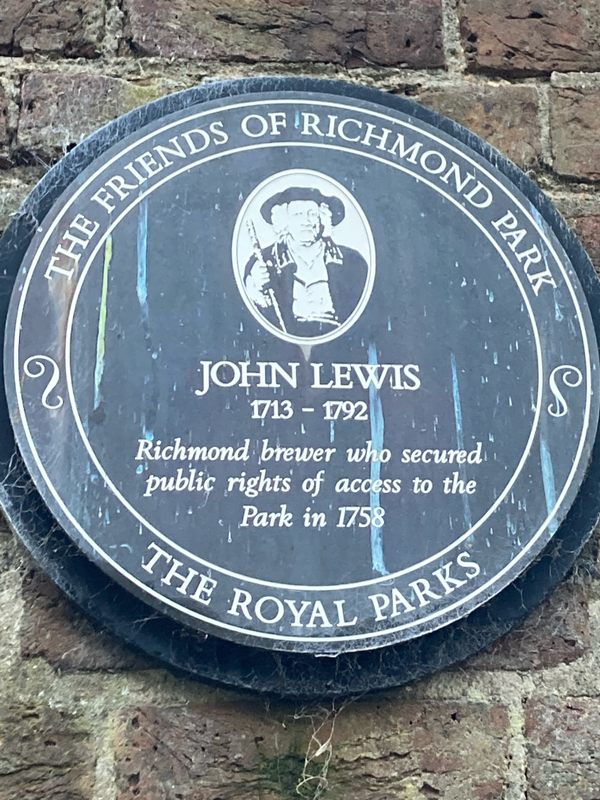Richmond Park was created by the selfish actions of a monarch. It took the bravery of a local brewer to establish the public’s right to access it.
Wishing to have a hunting ground close to London, Charles I chose an area of rural farmland near Richmond to make his own. Although he constructed an eight-mile wall around his new property, Charles deemed it prudent to allow the ordinary people whose common lands had been appropriated to enter the park to gather firewood—a sop to soften what had been a highly unpopular action.
Charles’ high-handed ways eventually lead to his dethronement and execution, but the park remained, and with it the rights of ordinary people to enter and make use of it. After a century, though, those rights eroded.
Sir Robert Walpole, the first prime minister of the United Kingdom, hunted frequently in the park with George II, and had his son, also Robert Walpole, appointed Ranger of Richmond Park. Gates and keeper’s lodges were installed in the park boundaries, and keepers were instructed to only allow respectable persons and carriages into the park. When Princess Amelia, daughter of George II, became Ranger of Richmond Park, she simply took the process to its logical conclusion, shutting the gates to everyone except those in carriages with special tickets. Richmond Park was now effectively the private playground of royalty and their friends.
Enter John Lewis. In 1755, he waited at the Sheen Gate to follow a carriage into the park. He was prevented from doing so by the gatekeeper, and after a short altercation, he left. John Lewis got what he wanted—the basis for an indictment against the gatekeeper. In 1758, the court awarded in favor of Lewis, and he was asked whether gates or ladderstiles should be installed to reinstate access. Lewis opted for ladderstiles, on the grounds that gates could be locked. Amelia installed ladderstiles, yes, but with ridiculously wide rungs so only the most athletic could climb them. Lewis took her to court again, and won again, with a judgement that the ladderstiles should be constructed so even “old women, too, may be able to get up.” Princess Amelia gave up the Rangership, and went to live in Gunnersbury.
John Lewis’s later life was blighted by poverty, but he remained a celebrated local character. In 2008, 250 years after his intervention brought access back to Richmond Park, the plaque which now stands at Sheen Gate was installed by the Friends of Richmond Park, a reminder that the freedom to enter and enjoy the Park had to be fought for.

